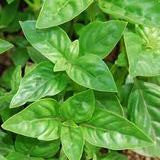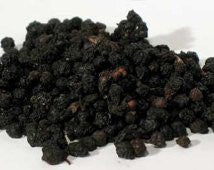
Basil Lemonade Recipe
My Basil tends to grow HUGE! I usually have so much to harvest that I have to come up with new ways to use it up or store it for...
Mary Smith |
Welcome to our store Learn more

My Basil tends to grow HUGE! I usually have so much to harvest that I have to come up with new ways to use it up or store it for...
Mary Smith |

We make quite a few organic herbal remedies here including tinctures, salves and herbal syrups. Today we made more Organic Elderberry Syrup using organic dry elderberry. *One of the benefits...
Mary Smith |

After sharing our DIY Calendula-Infused Oil we received so mach positive feedback and questions about Calendula. Mainly "What is it used for?" I use our homemade Calendula Oil for any...
Mary Smith |

Last year I started making my own Calendula Infused Oil. At first i was a bit frustrated because I didn't see many specific instructions. You know, with real measurements. So...
Mary Smith |

First let me start by saying that there is no quick fix or perfect concoction that works for everyone to boost Metabolism. There is no magical "cure." What I have...
Mary Smith |
Making your own herbal home remedies is easy. Herbal tea is a great start but Tinctures can a much stronger alternative. The cost to purchase 2 ounces in the store...
Mary Smith |
There's been quite a buzzzzz over our latest additions here at Mary's Heirloom Seeds. Last week we added Dill Bouquet, Wild Strawberry and Indian Strawberry. Indian Strawberry is considered...
Mary Smith |
Making your own herbal home remedies is easy. Herbal tea is a great start but Tinctures can be a much stronger alternative. The cost to purchase 2 ounces in the...
Mary Smith |
Another recipe for alternative "medicine." For my allergy tincture I use a special blend from Mary's Heirloom Seeds DIY Tincture Kit. It is an herbal combination which can be...
Mary Smith |
Making your own herbal home remedies is easy. Herbal tea is a great start but Tinctures can a much stronger alternative. The cost to purchase 2 ounces in the store...
Mary Smith |
It's another beautiful day here. The air is cool and crisp. The sun is shining and life is good! Today I'm talking Tinctures! In our house, we use tinctures first...
Mary Smith |
Making your own herbal home remedies is easy. Herbal tea is a great start but Tinctures can a much stronger alternative. The cost to purchase 2 ounces in the store...
Mary Smith |

YARROW, A great herb for Women's Health In case you missed the very first post in our Herbal Series, check out Boost Your Health with Organic Herbs There are...
Mary Smith |